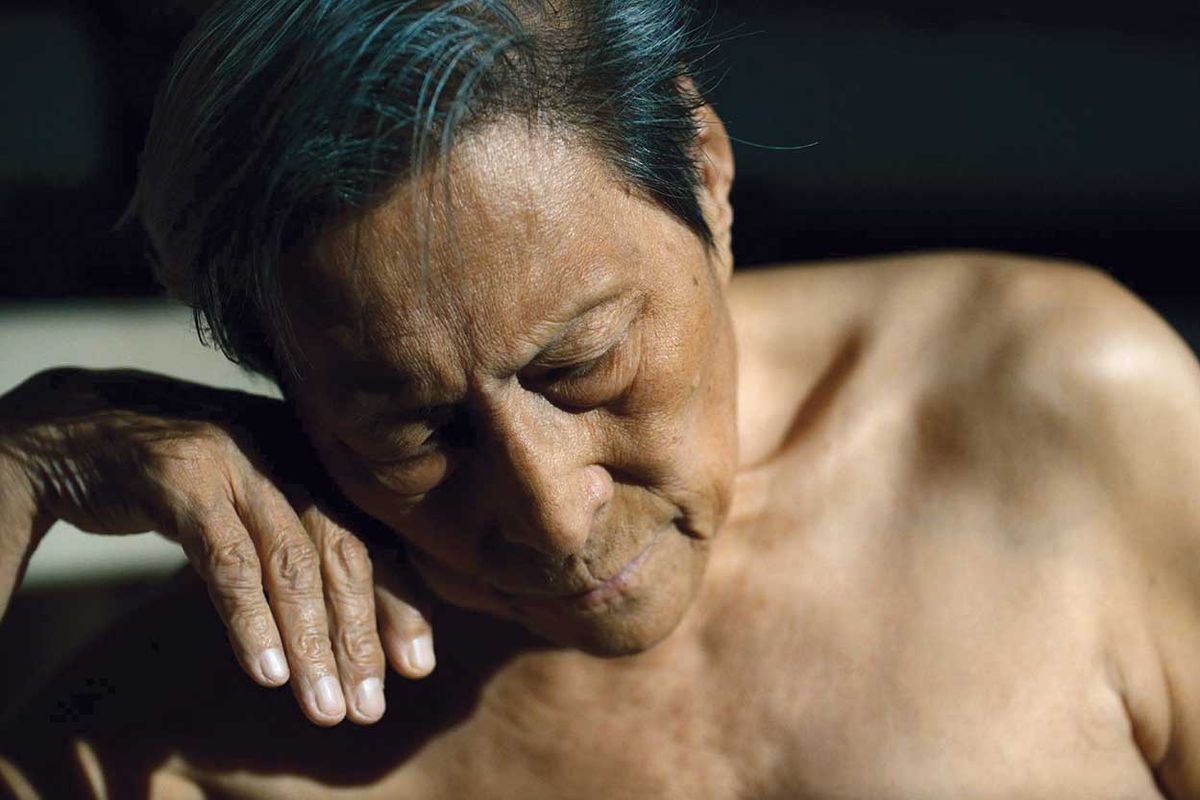A scene in the artist and film-maker Wang Bing’s latest film Man in Black has haunted me since I saw it. The film—which premiered at Cannes—is an extraordinarily intense and emotional portrait of the Chinese composer Wang Xilin, who tells his story through movement, music and words.
Wang Xilin, who is now 87, is naked throughout, alone in the Théâtre des Bouffes du Nord in Paris. He lives in Germany, exiled for his outspoken views on Communism and Chinese human rights, which led to his imprisonment and torture during the Cultural Revolution. Wang Xilin reflects on these experiences, and the political context that prompted them. He recalls losing his teeth in beatings. Excerpts from his music swell and fade around him as he describes the physical injury and mental illness that resulted, sometimes drowning him out entirely. And then he says something breathtaking: that in his Third Symphony, he wanted to evoke the sound of human skin being singed with a hot iron.
The acute power of the moment was absolutely about the unique alchemy of Wang Bing’s medium. Wang Xilin’s words alone are devastating, of course, but their full force is embedded in Wang Bing and cinematographer Caroline Champetier’s stark lighting and framing of his face, etched with pain as he explains his story, yet in reverie as he hears his music in his head. And the effect is propelled by the music’s overwhelming beauty and violence. Wang Bing’s achievement is not only to document a great artistic figure, but to somehow inhabit his musical and emotional world, and illuminate it. Wang Xilin and his artistic discipline are brought in to the light through film. As much as it is a documentary or a profile, it achieves a rare and marvellous communion of art forms within a magnificent whole.
It made me think about one of the dumbest phrases uttered about the arts: “Writing about music is like dancing about architecture”. Arguably, all dance is—intentionally or not—about architecture, or at least space. But the acute stupidity of that unattributed phrase came to mind when I witnessed a similarly magnificent work: the choreographer Wayne McGregor’s Untitled, 2023, performed by the Royal Ballet at the Royal Opera House in London in June. McGregor worked with the late Cuban-US artist Carmen Herrera on the sets for the work, but her stark, crisp designs were far more than just decoration. When I interviewed McGregor on The Week in Art podcast, he reflected on how Herrera’s work, with its balance of “formalism” and “sense of the precarious or the liminal”, helped him to subvert ballet’s formal language.
McGregor spoke of the rhythmic quality in Herrera’s arrangements of shape and pure colour, so that “you almost hear the work, you don’t just see it”. He responded to this perception of Herrera with precise, minimal yet poignant movement. It was choreography aspiring to the condition of abstract art, in the full knowledge that work involving bodies is always figurative; as McGregor puts it, “when we see other humans we can’t help but read story… or read emotion”. But, he adds, “when bodies are in correlation or relationship with another body, you can create architectural compositions”. The effect was astonishing. It turns out that dancing about architecture—or filming about music, as Wang Bing does in Man in Black—can produce great art.


